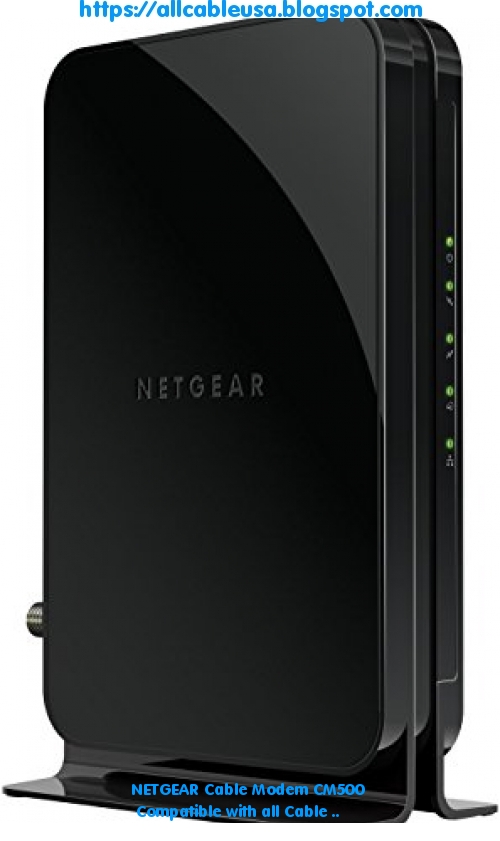

- #COX MODEM VS ROUTER HOW TO#
- #COX MODEM VS ROUTER ZIP#
- #COX MODEM VS ROUTER DOWNLOAD#
- #COX MODEM VS ROUTER FREE#
Watch the Cox video below on how to install Panoramic WiFi pods: It also explains why Cox won’t pair it with Gigablast it simply can’t handle the bandwidth. AC1200 should suffice unless you’re watching several UHD TVs simultaneously. This is the bottleneck through which all your connected devices served by the pod must pass.
#COX MODEM VS ROUTER DOWNLOAD#
These extenders cap out at “AC1200.” What does that mean? A Panoramic WiFi 802.11ac pod has a maximum throughput of 1.2 Gbps (combining both upload and download bandwidth). What makes Panoramic WiFi a mesh network platform are WiFi extenders, or in Cox marketing parlance, “ pods.” Sold (that’s right Cox only leases Panoramic WiFi gateways but makes customers buy WiFi extenders if their home needs them) as a set of three for $129.99, they use powerline-based G.hn technology to stretch a home’s WiFi connectivity. It too has an internal power supply and optional battery backup up to 24 or 8 hours, depending upon configuration. Other features include four Gb Ethernet ports, two telephone ports and a USB 2.0 host port. Also a dual-band router, it uses 24×8 channel bonding and MoCA 2.0 coax for in-home networking.

Lower speed packages get the DOCSIS 3.0-compliant Arris TG1682 gateway. Equipped with a two-port Gigabit Ethernet switch, the CGM4141 has an internal power supply and optional battery backup good for either 24 hours or 8 hours. A dual-band ( 802.11ac/n), IPv4/IPv6 router, it uses 32×8 channel bonding and a 2.0 eDVA PacketCable for VoIP. Cox Panoramic WiFi ParticularsĪccording to Cox, Panoramic WiFi utilizes one of two gateways, depending on package data speed.Ī higher speed service package like Gigablast and Ultimate receives a Technicolor CGM4141 DOCSIS 3.1 gateway. Note that Cox recommends that their techs conduct a site survey of the customer’s premises before installation. Thus, it comes as no surprise that Panoramic WiFi gateways can only be rented, not bought, from Cox. As consumers have grown more tech-savvy, they’ve eschewed renting conventional “volcano” gateways from their MSO and instead purchased their own. In search of greater profits and diversified revenue streams, MSOs are rolling out whole-residential WiFi platforms like Panoramic WiFi and the XB6. In 2017, Comcast unleashed the XB6, deploying DOCSIS 3.1, multi- gigabit gateways (aka combined modem/wireless routers) made by Arris and Technicolor (which in 2015 bought Cisco Systems’ CPE business). Remember that caveat if you’re trying to feed gluttonous data hogs like UHD TVs in the far corner of your home.Ĭomcast Cox is not the only MSO to offer residential mesh network CPE to consumers.
#COX MODEM VS ROUTER FREE#
Preferred, Ultimate and Gigablast customers enjoy free access to Cox’s 650,000+ public WiFi hotspots.Īll plans except Gigablast can use Panoramic WiFi. While all tiers come with a reasonable 1,024 GB monthly data cap, the ratio between down and up speeds can be problematic for those who upload massive files or frequently conduct video calls. The majority of its subscribers come from seven states-Arizona, southern California, Kansas, Louisiana, Oklahoma, Nevada and Virginia.Ĭox offers five Internet packages to residential consumers:
#COX MODEM VS ROUTER ZIP#
Operating in 19 states and 1,712 zip codes, Cox Communications is THE cable company in such cities as Las Vegas, San Diego, Tucson, Phoenix and Oklahoma City. You’ll see how it works and even better, why you should think twice before paying Cox a monthly fee to use it. Multiple Service Operator (MSO aka “the cable company”) in the U.S: Panoramic WiFi. Today’s foray surveys a wireless mesh networking platform introduced in 2017 by Cox Communications, the third-largest U.S.


Longtime IAG readers may recall our articles from 2016 on WiFi mesh networking and WiFi extenders. Want Panoramic WiFi? Go to the Cox Solutions StoreĬC-By 2.0 Cox’s Panoramic WiFi & How It Works


 0 kommentar(er)
0 kommentar(er)
